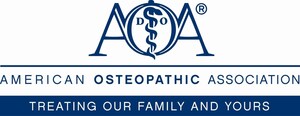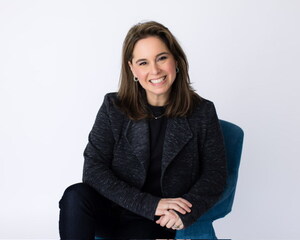Poll Shows Current Medicare Payment Policies Have a Negative Impact on Access to Health Care
Fundamental Medicare Physician Payment Reforms Will Ensure Access to Care and Foster Practice Transformation
WASHINGTON, May 12, /PRNewswire-USNewswire/ -- An independent poll recently conducted on behalf of the American Osteopathic Association (AOA) shows that an alarming number of physicians will stop seeing Medicare beneficiaries if current payment policies are not reformed. When physicians who have at least some say in what kind of insurance they accept in their practices were asked about the pending 21.3% cut in Medicare payments, only 42% said they would definitely or probably continue seeing their current Medicare patients if the cut were to occur. Another 33% were undecided as to whether or not they would continue to see their current Medicare patients. Twenty-four percent said they probably or definitely would not. Furthermore, only 30% of those currently accepting new Medicare patients said they would continue to do so if the cut were to be implemented (32% said they might, and 37% said they probably or definitely would not).
The AOA has long argued that Congress should enact reforms to the Medicare physician payment formula that ensure annual increases in payments based upon increases in practice costs. When asked about their participation in the Medicare program if such reforms were enacted, 94% of respondents would continue to see their current Medicare patients and 92% indicated they would continue to accept new Medicare patients. Though base sizes were small for those who do not currently accept Medicare, a third of them did indicate that they would start accepting new Medicare patients if the payment formula was reformed.
"These numbers should be a wake up call to policymakers," stated AOA President Larry A. Wickless, DO. "The proposed cut of 21.3% and the lack of a predictable and equitable payment formula will, without question, have a severe negative impact on physicians' future participation in the Medicare and Medicaid programs."
According to respondents, their three largest concerns with the current Medicare reimbursement system are:
- Medicare payment rates do not increase at the same rate that medical costs increase;
- The current payment formula does not adequately cover the cost of care provided and;
- Congress's temporary fixes are unreliable, with reimbursement rates potentially fluctuating on a monthly basis.
Less than 70% of all respondents indicated they accept Medicaid from their current patients. A majority use some form of health information technology (HIT) in their practice, and 50% are using electronic prescribing. For those not using HIT currently, 11% stated that they are in the process of implementing a HIT system in their practice. Respondents were supportive of quality improvement programs with 50% indicating that their practice or hospital participates in the Physician Quality Reporting Initiative (PQRI).
"Osteopathic physicians are committed to providing high quality health care services to Medicare beneficiaries, participate in quality improvement programs, and implement health information technology in their practices. However, they have clearly indicated that they need a more stable funding formula in the nation's public program to assure continued patient access and improved quality," stated AOA Executive Director John B. Crosby, JD.
The Benenson Strategy Group (BSG) polled 1,021 osteopathic physicians (DOs) on behalf of the American Osteopathic Association (AOA) between April 28 and May 1, 2010. All respondents were members of the AOA and spend at least 20% of their time providing direct patient care. Generally speaking, 55% of respondents described themselves as primary care physicians, 25% as medicine specialists, and 20% as surgeons or surgical specialists. Nearly 70% of those responding to the poll practice in an ambulatory setting or private practice, with half of those having at least some ownership stake in the practice. Fifty-five percent practice in a single office location, and 62% practice in a group of 5 or fewer physicians. Twenty-four percent of respondents practice in a rural community, 45% practice in a suburban or exurban community, and 31% practice in an urban community. Forty-eight percent of all respondents have at least some role in the decision making process when it comes to deciding what type of insurance to accept and 63% of respondents in an ambulatory setting responded that they have a role in the process.
*For a summary of poll results, please visit http://www.do-online.org/pdf/pollsummary.pdf
The American Osteopathic Association proudly represents more than 67,000 osteopathic physicians (DOs) practicing in 31 specialties and subspecialties, promotes public health, encourages scientific research, serves as the primary certifying body for DOs and is the accrediting agency for all osteopathic medical schools and health care facilities. More information on DOs/osteopathic medicine can be found at www.osteopathic.org.
SOURCE American Osteopathic Association
WANT YOUR COMPANY'S NEWS FEATURED ON PRNEWSWIRE.COM?
Newsrooms &
Influencers
Digital Media
Outlets
Journalists
Opted In






Share this article